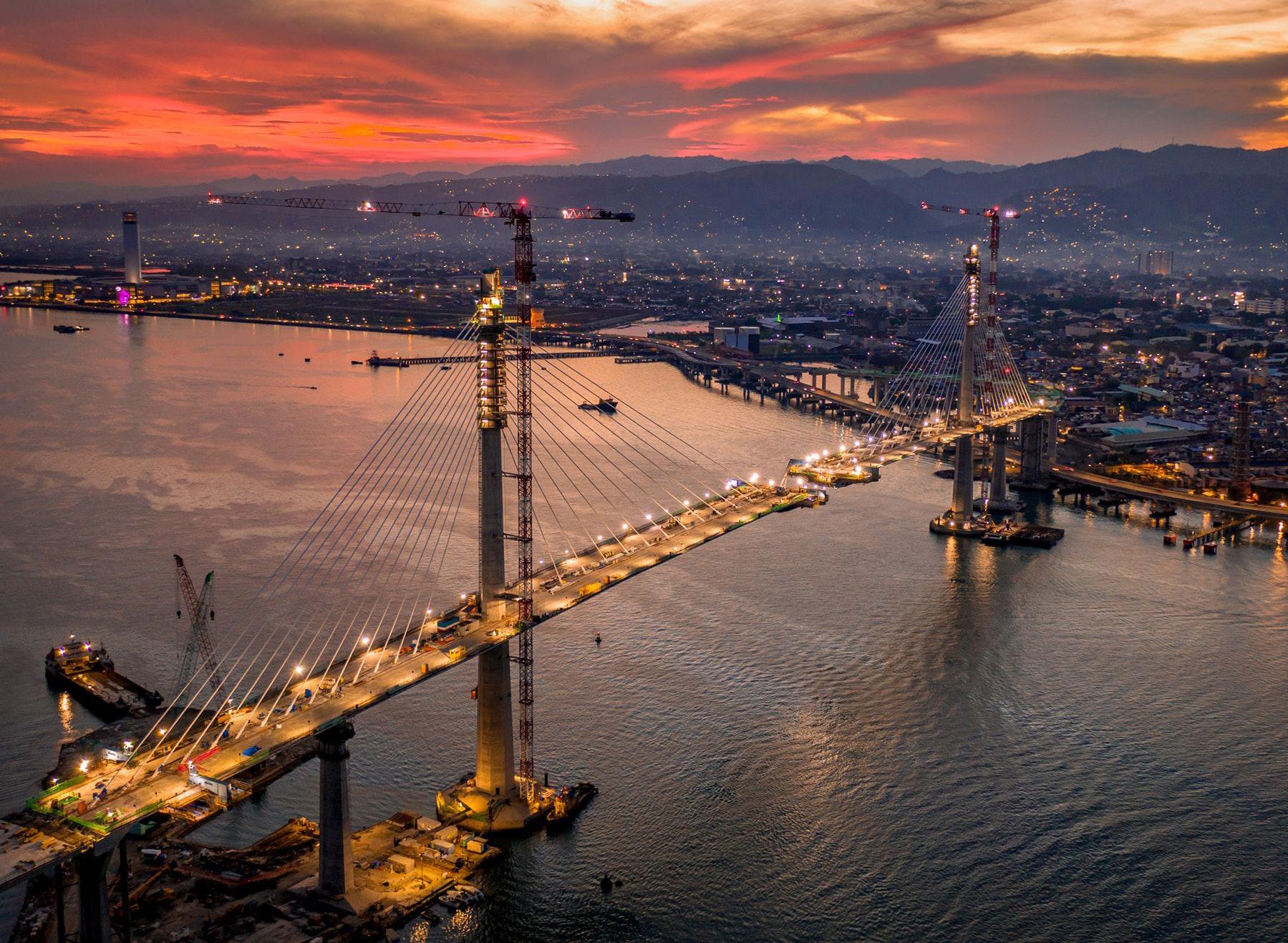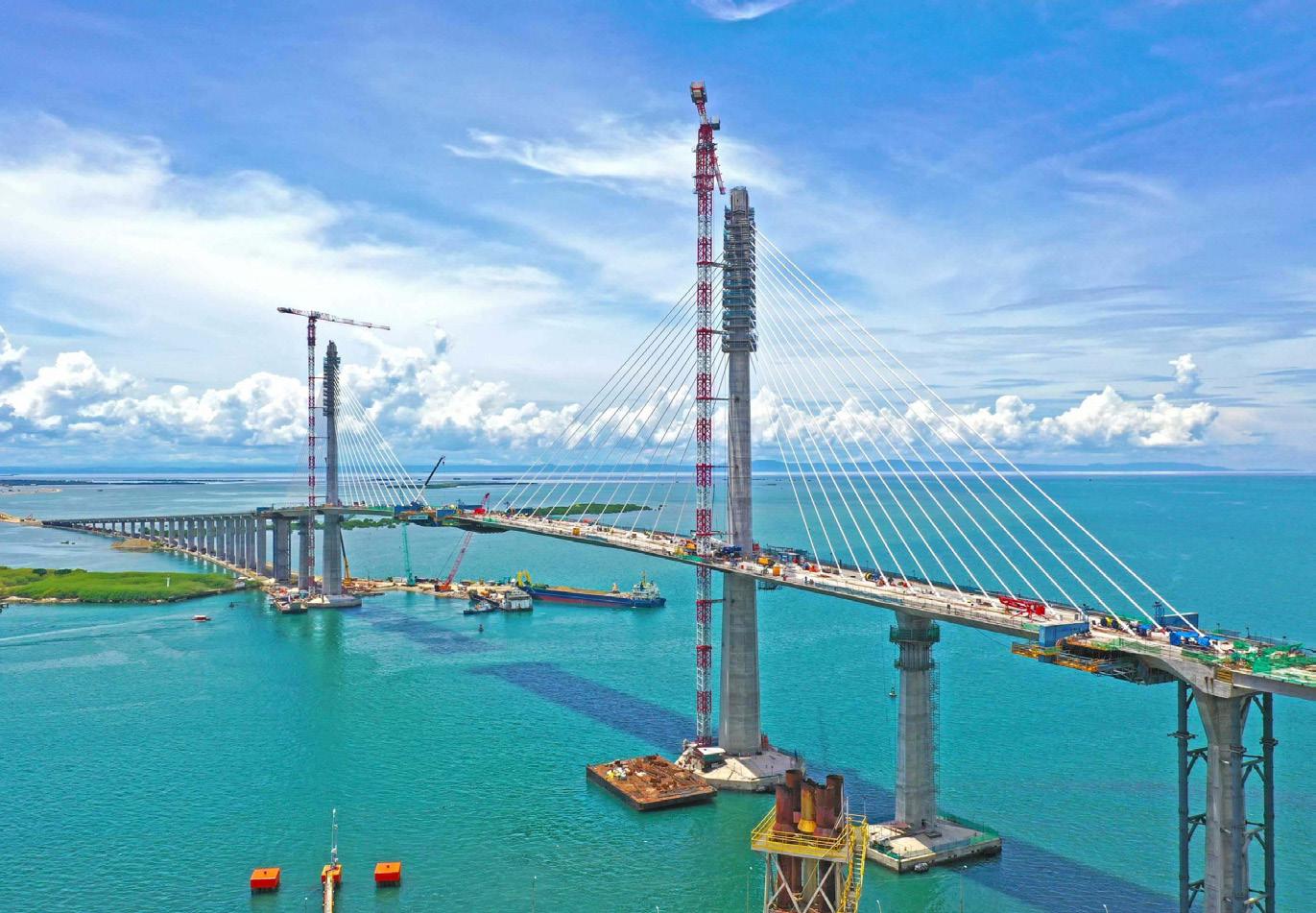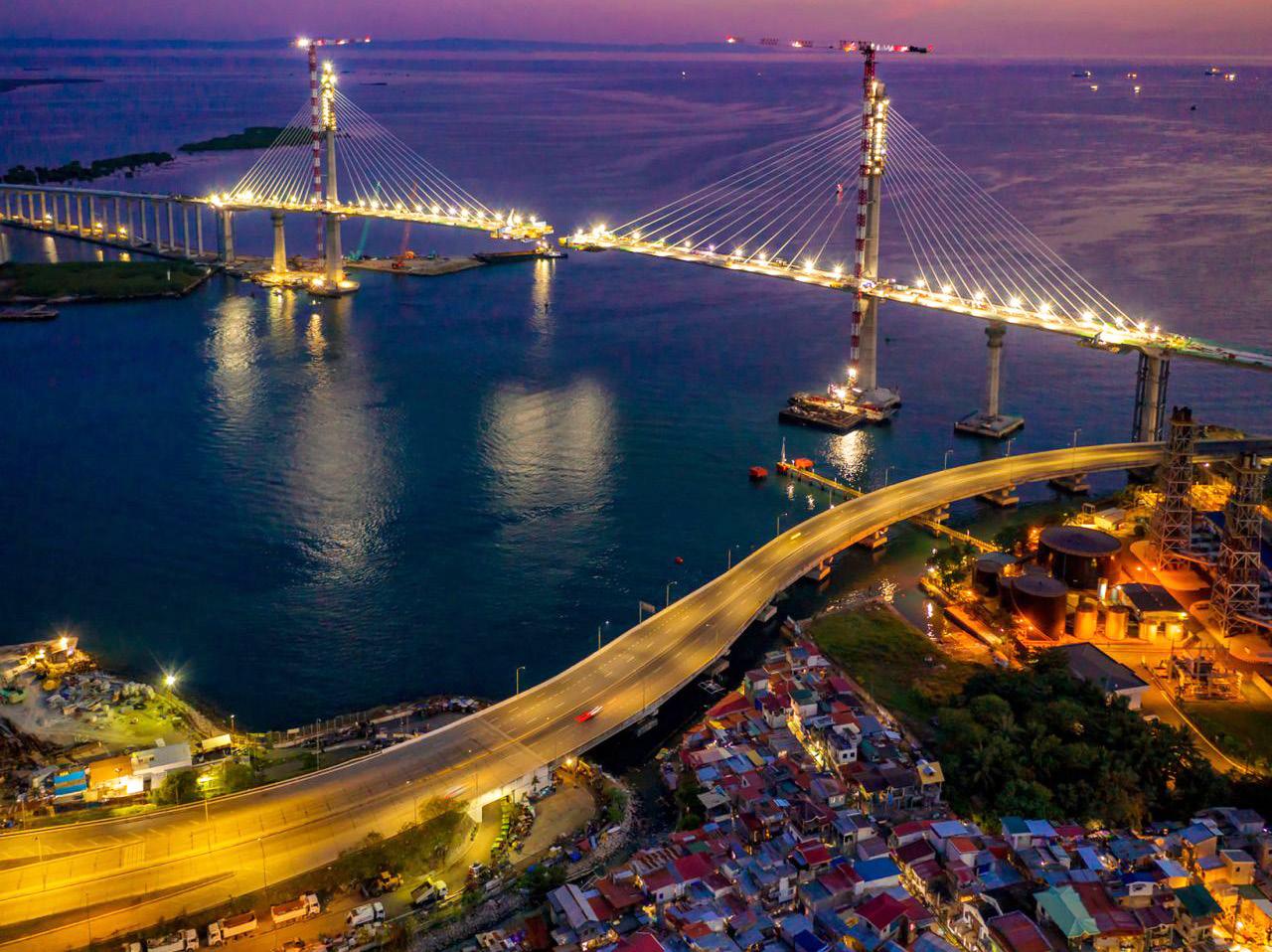
4 minute read
Comansa helps join together two Philippine Island
Two Comansa 21LC660 tower cranes are working on the construction of the cable-stayed bridge which will join Cebu City and Mactan Island in the Philippines, a location repleted with logistical challenges.
Comansa tower cranes ensure that even the most complex bridge construction projects are a resounding success. On this occasion, thanks to the tower crane manufacturer’s vast experience and the commitment of its technical team, the Cebu-Cordova Link Expressway bridge will soon become a reality. Two Comansa 21LC660 tower cranes (36-tonne version) are currently being used to build the bridge that will join Cebu City, the second largest city in the country, and Mactan Island, where the international airport that serves the city is located, a significant structure which will help to alleviate the heavy traffic that currently travels through the two existing bridges. Thanks to this new bridge, the journey time will be reduced by up to 40 minutes. This will help streamline commercial and industrial travel and facilitate the transportation of tourists landing at the international airport of Mactan, which is the main touristic hub of the country. This is a key project for the region, awarded by CCLEC (Cebu Cordova Link Expressway Corporation), a subsidiary of MPTC (Metro Pacific Tollways Corporation), to Cebu Link Joint Venture (CLJV), a joint venture between ACCIONA, First Balfour and DMCI. In order to meet the specific requirements of the project, two Comansa 21LC660 flat-top cranes from the 2100 series have been selected, the perfect choice for maximum performance in projects involving particularly heavy loads, such as bridge construction. Furthermore, the use of 80-metre long booms has made possible to provide a wide and accessible perimeter on-site surrounding the two main pylons on which the bridge was built.

Modular system, the key to simple assembly
The project was divided into three sections: the Cordova viaduct and causeway, the cable-stayed bridge being this the main bridge of the project, and the access viaducts on Cebu City side. Comansa’s tower cranes have been used to construct the main cable stayed bridge which, when completed, will span approximately 650 metres and be supported by two towers of 150m height each. • Tower 1 is located a distance from the coast and is not accessible by land, so the tower crane had to be erected using a crawler crane mounted on a boat. • Tower 2 is also far from the coast, but in this case a temporary island/ dock was made using fill material, allowing materials to be delivered and thus enabling the bridge to be built. The tower crane was erected using a crawler crane from this provisional island. The modular system used by Comansa, with its compact pieces, played a fundamental role in this project by allowing the tower cranes to be erected in such complicated circumstances.
Versatility of tower cranes The tower cranes were used for a variety of purposes:
• Lifting heavy equipment to the deck during the construction phase, such as mobile cranes, boom trucks and concrete pumps weighing up to 32 tonnes. • During concreting operations, in order to lift 5m3 concrete buckets (weighing approximately 12 tonnes) from the pile cap to the deck and moving them in a 40-metre working radius, in order to feed the static pumps used for delivering of concrete to the segment being executed. • Lifting and placing pylon formwork, prefabricated pylon rebar cages (approximately 8 tonnes), lifting of rebar bundles for structural works, anchor boxes lifting and installation for the stay cables, stay cable installation, among other daily activities carried out during bridge construction etc. The ability to automatically change reeving, combined with the Power Lift system, allowed the cranes to easily adapt to a wide range of loading manoeuvres, handling different volumes and weights and taking full advantage of the cranes at all times.
Comansa, “come hell or high water”
Given the bridge's location in a country that is affected by typhoons during the rainy season, the tower cranes were designed to support winds of up to 250 km/h. In addition, due to their height and the proximity to Mactan-Cebu Airport, both the cranes and the booms were fitted with safety lights in compliance with civil aviation regulations. Both tower cranes were struck by lightning during the construction work, but thanks to their lightning protection, the operators were unharmed and the tower cranes were able to continue working after undergoing mechanical and electrical checks (assisted by the Comansa technical team through their online support). Ease of assembly, versatility, efficiency and technical assistance are just a few of the aspects that will ensure that the constructor finishes on schedule so that this engineering masterpiece can be unveiled during the first quarter of 2022.
COMANSA,
info@comansa.com, www.comansa.com












